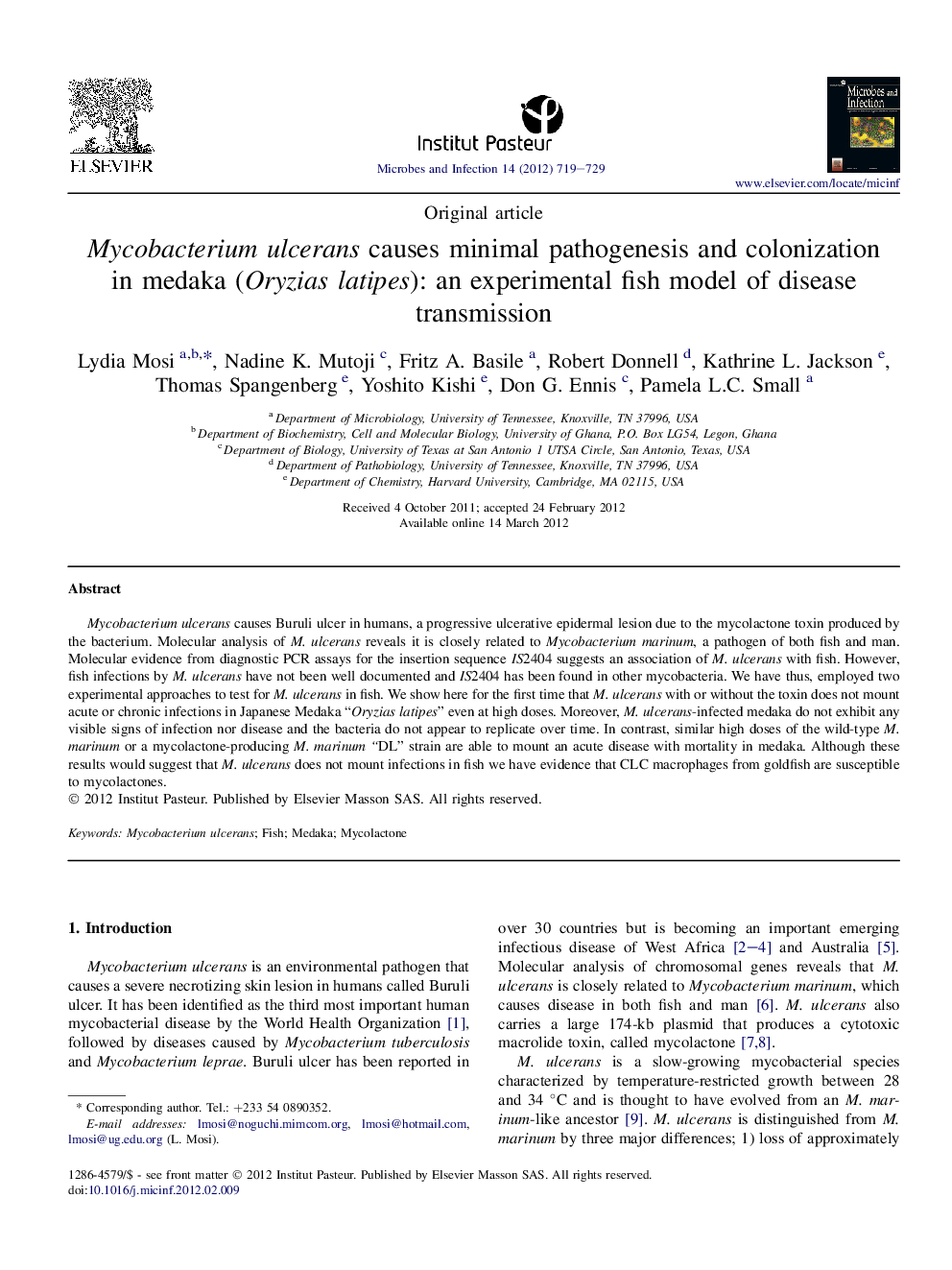| Article ID | Journal | Published Year | Pages | File Type |
|---|---|---|---|---|
| 6135971 | Microbes and Infection | 2012 | 11 Pages |
Abstract
Mycobacterium ulcerans causes Buruli ulcer in humans, a progressive ulcerative epidermal lesion due to the mycolactone toxin produced by the bacterium. Molecular analysis of M. ulcerans reveals it is closely related to Mycobacterium marinum, a pathogen of both fish and man. Molecular evidence from diagnostic PCR assays for the insertion sequence IS2404 suggests an association of M. ulcerans with fish. However, fish infections by M. ulcerans have not been well documented and IS2404 has been found in other mycobacteria. We have thus, employed two experimental approaches to test for M. ulcerans in fish. We show here for the first time that M. ulcerans with or without the toxin does not mount acute or chronic infections in Japanese Medaka “Oryzias latipes” even at high doses. Moreover, M. ulcerans-infected medaka do not exhibit any visible signs of infection nor disease and the bacteria do not appear to replicate over time. In contrast, similar high doses of the wild-type M. marinum or a mycolactone-producing M. marinum “DL” strain are able to mount an acute disease with mortality in medaka. Although these results would suggest that M. ulcerans does not mount infections in fish we have evidence that CLC macrophages from goldfish are susceptible to mycolactones.
Related Topics
Life Sciences
Immunology and Microbiology
Immunology
Authors
Lydia Mosi, Nadine K. Mutoji, Fritz A. Basile, Robert Donnell, Kathrine L. Jackson, Thomas Spangenberg, Yoshito Kishi, Don G. Ennis, Pamela L.C. Small,
